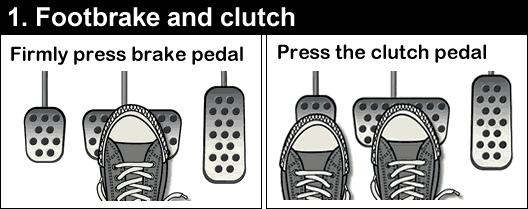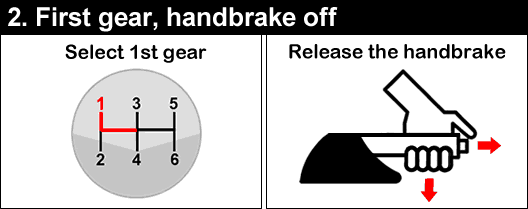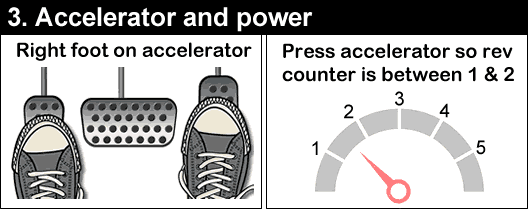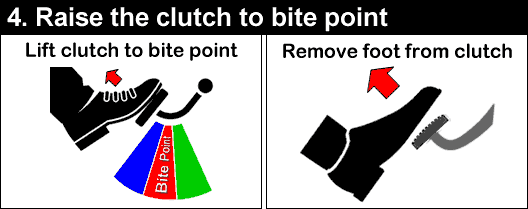Moving Off Without the Handbrake
When you start out learning to drive, when moving off, you’re often taught to find the clutch bite point with the handbrake on, then hold the car on the bite point and release the handbrake when ready to do so. You can read up on how to do this by visiting the holding the car on the clutch biting point tutorial.
While this is useful for novice drivers in helping to prevent stalling and especially useful for all drivers when carrying out a hill start, in general driving, it’s a technique that requires a lot of unnecessary effort. Not only that, but it’s a great way of wearing your clutch out.
If you still use the handbrake/bite point technique for moving off, then you should progress to moving off without the handbrake, or another way of putting it; moving off without first finding the clutch biting point. You’ll find it much easier and far less wear on your car’s clutch.
How to Move Off Without the Handbrake
Moving off without the handbrake is quite an easy process, but to get good and confident, it’ll take some practice. You’ll need to find a quiet area to start; this could be a quiet residential street or a large car park that’s not too busy. Also ensure the area you’re using to practice is reasonably level as having to deal with a rolling car will make the process harder.
Note: It’s important that when practicing moving off, whether on a quiet road or in a car park, safety observations are conducted, such as the 6 point check each time before moving off.
1. Footbrake and Clutch
With the engine started and the handbrake on, firmly press the brake pedal with your right foot and with your left foot, press the clutch pedal all the way to the floor.

2. First Gear and Handbrake Off
Now select first gear and release the handbrake.

3. Off Brake and On Power
Remove your foot from the brake pedal and place it onto the accelerator pedal. Slightly press the accelerator pedal to provide the engine with power. This helps to prevent stalling. When the rev counter needle is between the 1 and 2, this should be enough.

4. Lift the Clutch to the Bite Point
Slowly begin to lift the clutch up. When you reach the bite point, the car will begin to move forward (for an explanation of the bite point, see what is the car’s clutch bite point). Very slowly continue to lift the clutch until the car has momentum. Once the car has gathered some speed, you can lift the clutch pedal all the way up and remove your foot from it.

Always remove your foot from the clutch pedal when you’re not using it. Leaving your foot on the pedal (riding the clutch) may risk causing unnecessary wear on the clutch plates.
Keep Practising
Keep practising, moving the car off and stopping using the stages detailed above. You’ll find that the process becomes quicker and you’ll soon begin moving off like a pro. Always remember though, you can speed up this process as a whole, but you always need to lift the clutch up slowly in the bite point area. Doing this too fast will stall the car.
Use the technique above for moving off on a level surface and use the holding the car on the clutch biting point technique for moving off on a hill. Both of these clutch control techniques are essential for a good standard of driving.
Should one accelerate more after the clutch bite point or keep the acceleration steady after the clutch bite point?
Hello Mbome,
Depends what you want to do. If you’re moving ahead slowly, in say a traffic queue, then you will keep the accelerator steady. If you’re moving off with the intention of gaining much more speed, you will increase the amount of pressure on the accelerator.
Hi there
I frequently use the handbrake when I am stopped on a steep incline or waiting to turn right off an incline. Is it beneficial to keep using the handbrake?
Hi Gregory,
Yes, using the handbrake while stopped on an incline is hugely beneficial. Just before moving off, when you time it just right, it allows you to bring the clutch up, while simultaneously pressing the gas pedal, while releasing the handbrake. When all completed in one single movement, it means you can move off smoothly without fear of rolling the car backwards.